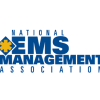New field triage instructions were released by the Centers for Disease Control and Prevention (CDC) in the Jan. 13 issue of Morbidity and Mortality Weekly Report (MMWR). The CDC collaborated with the American College of Surgeons Committee on Trauma to create a panel to review the last revisions, done in 2006, to the Field Triage Decision Scheme and consider any needed updates. Among the changes:
- The Glasgow Coma Scale criterion was clarified to read less than or equal to 13, rather than the previous assessment of less than 14.
- In the injury assessment step, the term “flail chest” was changed to “chest wall instability or deformity (e.g., flail chest).” To the conditions “crushed, degloved, or mangled extremity,” another—“or pulseless”—was added.
- To the special patient assessment step, criteria considerations for older adults, the warnings were added that a systolic blood pressure of less than 110 might represent shock after age 65 and that low-impact or ground-level falls might result in severe injury.
- In addition to these and other changes, the layout of the transition boxes was redesigned and specific language within the boxes was revised. The panel anticipates updating the triage scheme every five years.
To view the document, visit cdc.gov/mmwr/pdf/rr/rr6101.pdf.
Doing More with Less
Responders start the new year with fewer funding resources at their disposal as a result of the budget that was signed into law in December 2011 to pay for government operations for fiscal year 2012. Prior to leaving for home at the end of the 2011 legislative session, Congress approved, and President Obama signed, an omnibus budget bill funding the agencies that manage emergency response programs and grants.
Among the provisions, which generally reduce program funding all around, are:
- The U.S. Fire Administration receives $44.04 million, a $1.55 million cut.
- Aid to Firefighter Grants (AFG) and Staffing for Adequate Fire and Emergency Response (SAFER) Grants were funded at $337.5 million each, equally reduced by $67.5 million, but the SAFER waivers were extended to permit the rehire and retention of firefighters through fiscal year 2012.
- In a bit of good news, urban search and rescue teams receive $41.25 million, an increase of more than $6 million.
- In a dramatic change in the way Department of Homeland Security’s (DHS’s) state and local programs are funded, the department will receive a total of $1.35 billion to pay for all of these important programs, which includes the Metropolitan Medical Response System, State Homeland Security Grant, Urban Areas Security Initiative, Citizen Corps and Interoperable Communications Grant. The DHS secretary has the discretion to distribute funds among these programs according to “threat, vulnerability and consequence.” Additionally, $50 million must go to Operation Stonegarden; no less than $100 million must go to areas at the highest threat of a terrorist attack; and $234,681,000 will go for training, exercises and technical assistance, with $155,500,000 of that for training local emergency response providers, among other conditions placed on the monies.
NHTSA Issues Guidelines for Electric Cars
Releasing an extensive report declaring that electric cars present no greater fire risk from their batteries than gasoline-powered engines, the National Highway Traffic Safety Administration (NHTSA) nevertheless offers interim guidelines for EMS and fire responders managing electric and hybrid vehicle crashes.
Released in January, the study on the Chevrolet Volt was undertaken when, beginning last November, fires broke out in Volt test-crash vehicles up to three weeks after being crashed. Experts believe the fires were caused when damage to the lithium-ion propulsion battery compartment ruptured the battery’s liquid cooling system, leading to electrical shorts. The fires began from seven days to three weeks after the test crashes, though NHTSA has no reports of the same results in real driving experience. General Motors, which manufactures the cars, will add protective plates around the batteries.
NHTSA warns that these cars have special attributes that emergency responders should be aware of to aid in the identification of necessary safety measures. The agency’s guidelines, “Vehicle Shutdown and High Voltage System Disabling,” include instructions for disabling the vehicle, ventilating the passenger area in the presence of noise or liquid from the battery, performing rapid extrication if unusual odors or tissue irritation occur, and remaining a safe distance upwind and uphill from the vehicle until appropriately equipped emergency responders arrive. Foremost, responders should be alert for the potential of delayed fire from damaged lithium ion batteries.
Links to the 135-page incident overview report, one-page interim guidance and related documents are at nhtsa.gov/About+NHTSA/Press+Releases/2012/NHTSA+Statement+on+Conclusion+of+Chevy+Volt+Investigation.
USFA Administrator Confirmed
The Senate voted in November 2011 to confirm President Obama’s nominee as administrator of the U.S. Fire Administration (USFA), Chief Ernest Mitchell Jr. (Ret.).
Mitchell brings 30 years of experience to the position, retiring in 2004 as fire chief and assistant director of disaster emergency services with the Pasadena (Calif.) Fire Department. He also served as president of the International Association of Fire Chiefs from 2003 to 2004.
The USFA is in the Department of Homeland Security.












